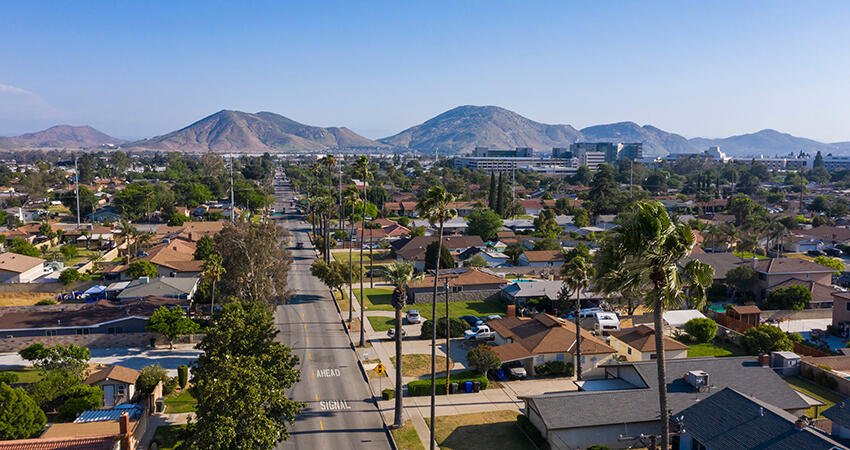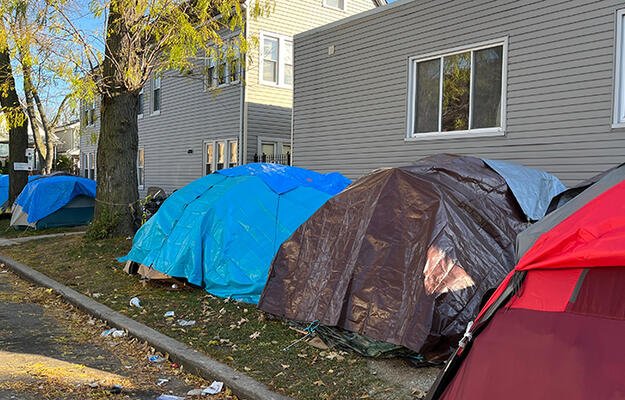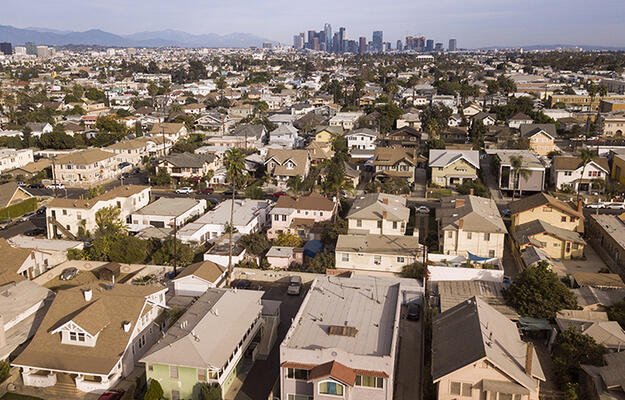
(Matt Gush/Shutterstock)
California’s Affordable Housing Stock Is Dwindling. How Can It Be Preserved?
As housing costs continue to rise across the country, affordable housing availability is more important than ever. But data show the affordable housing stock is insufficient to meet demand, so preserving existing affordable homes is increasingly important. Though affordable housing can exist in several forms, most are either subsidized affordable housing units financed by the local, state, or federal government or unsubsidized, “naturally occurring” affordable housing (NOAH).
Two recent reports by the California Housing Partnership examine California’s stock of subsidized and naturally occurring, unsubsidized affordable housing, as well as the number of those homes at risk of being lost in the coming years. They find more than a million more affordable housing units are needed in California, and more than 300,000 NOAH units and 30,000 subsidized units are at risk of being lost.
Housing Matters spoke with the reports’ authors, Matt Alvarez-Nissen and Danielle Mazzella, to learn about the significance of this loss and strategies for preventing it.
What are the biggest drivers of the loss of affordable housing in California?
As we showed in our Who Can Afford to Rent report last year, California’s households with lower incomes are unable to keep up with rising rental costs; none of the state’s 1.18 million households with extremely low incomes were able to afford average asking rents in 2022.
Homes that are affordable at market rates—NOAHs—are becoming increasingly scarce, in part due to recent increases in NOAH acquisitions by large, for-profit entities, but largely due to a continued supply shortage of affordable housing throughout the state.
In recent years, subsidized affordable housing has been lost due to project-based rental assistance contracts not being renewed with the federal Department of Housing and Urban Development and regulatory agreements expiring on developments built through the Low-Income Housing Tax Credit Program, redevelopment, and through California Housing Finance Agency’s multifamily programs.
What characteristics categorize a unit as a higher risk for conversion to nonaffordable housing? Do subsidized housing and NOAH units face unique risk factors?
To study unsubsidized affordable housing, we developed a new model that generates a risk score for individual properties based on both property- and neighborhood-level factors. While we can’t get into each specific risk factor since the model is proprietary, we rely on existing literature on NOAHs to help guide us. For example, the recent sale of a property can increase the risk of loss. It’s trickier to gauge the risk for NOAHs—there are no affordability end dates and little information on the property owners or their intentions. These unsubsidized affordable properties are also influenced by market fluctuations in a way subsidized affordable properties are largely shielded from.
For subsidized housing, we focus on the length of affordability and ownership of subsidized multifamily rentals for determining risk. We consider the units at highest risk as those having less than five years of affordability through either deed restriction, rental subsidy, regulatory agreement, or other mechanisms and as those not owned by a stable, mission-driven owner. Other factors including condition of the development and financial standing are considered on a case-by-case basis and affect the long-term viability of a development remaining affordable.
What groups of people or neighborhoods are experiencing the greatest loss of affordable housing?
Southern California and the Bay Area have experienced the brunt of NOAH loss since 2020, especially in neighborhoods with higher access to opportunity—including educational, economic, and environmental opportunity. This presents a major challenge to the state’s mandate to Affirmatively Further Fair Housing, as households with lower incomes are becoming increasingly unable to afford rent in these neighborhoods. Absent any serious policy interventions, it appears that this trend will only continue.
Southern California, the Bay Area, and the San Joaquin Valley have been impacted the most in terms of the net number of subsidized affordable homes that have been lost and what is at risk over the next 5 to 10 years.
Have your report findings had any effects locally since publication?
Yes, educating the public and the policymakers about the trends in data to show the needs has added fuel to the fire in terms of the growing support for pending state and local legislation.
For example, Los Angeles passed Measure ULA (PDF), under which residential and commercial real property sales and transfers valued at or over $5 million, but less than $10 million, are now subject to an additional tax of 4 percent (it had previously been 0.45 percent). Sales and transfers valued at or over $10 million are subject to an additional tax of 5.5 percent. The measure established the House LA Fund to collect the special tax revenue and allocate funds to designated projects to prevent homelessness.
What can policymakers do to help preserve or create more affordable housing?
The following are ways that state leaders can consider providing the tools necessary for local governments and nonprofit, mission-driven organizations to effectively acquire and preserve existing NOAH in California:
- Expand funding available for mission-driven affordable housing entities to purchase at-risk NOAH developments by as proposed in State Senator Anna Caballero’s Senate Bill 225.
- Create incentives for private owners of at-risk NOAH developments to sell to affordable housing entities.
- Provide tenants and community organizations with a first right of offer when rental housing is put up for sale.
- Eliminate the 2030 sunset on, and close loopholes in, Assembly Bill 1482 of 2019, the statewide rent cap law as is proposed in State Senator María Elena Durazo’s Senate Bill 567.
- Collect rental cost data on large and small privately owned apartment complexes to better understand where additional NOAH properties are at risk.
- Reduce the cost of developing affordable homes by applying the welfare property tax exemption at the time a property is dedicated to affordable housing, making state funds available during construction to reduce interest costs, and capping disproportionately large state monitoring fees.
California's housing affordability challenges, decades in the making, can be improved by these and other sustained long-term efforts, as detailed in California's Roadmap Home 2030. By pairing clear goals with synergistic policy and systems-change strategies that can have an effect over time, the investments made today can bring about improved housing outcomes for many Californians.


